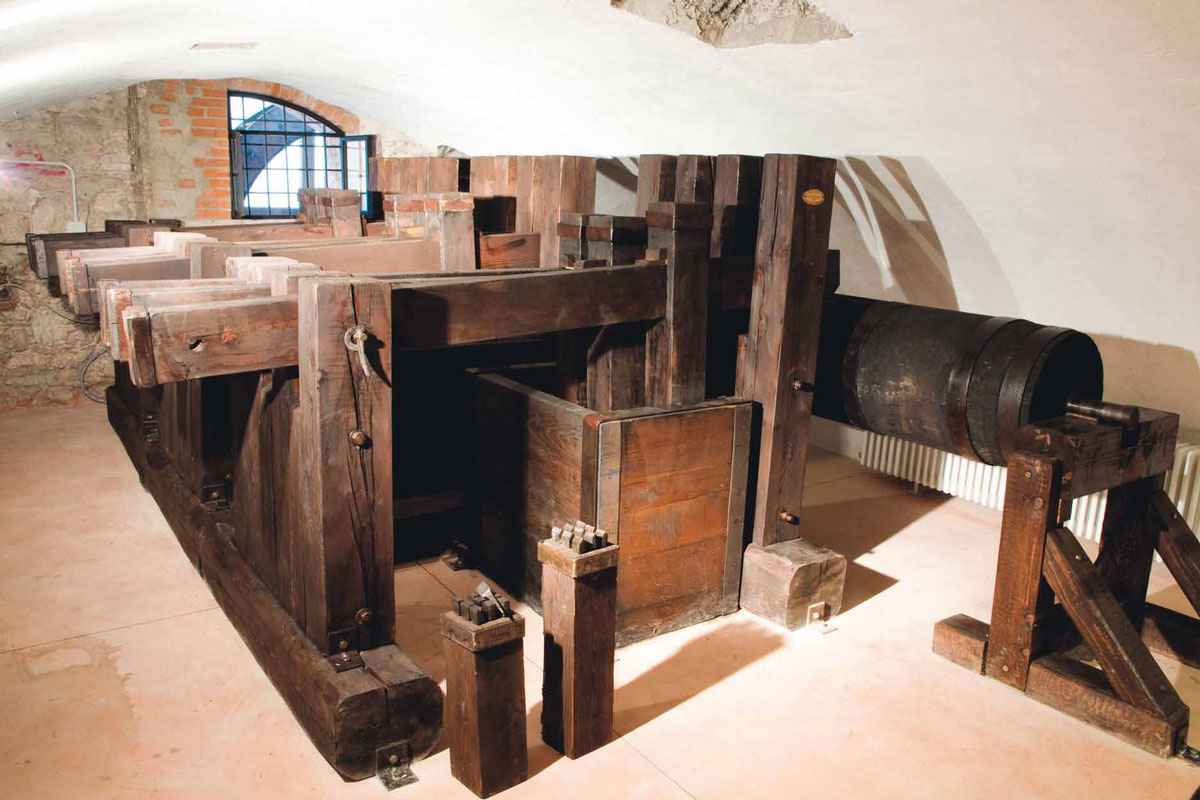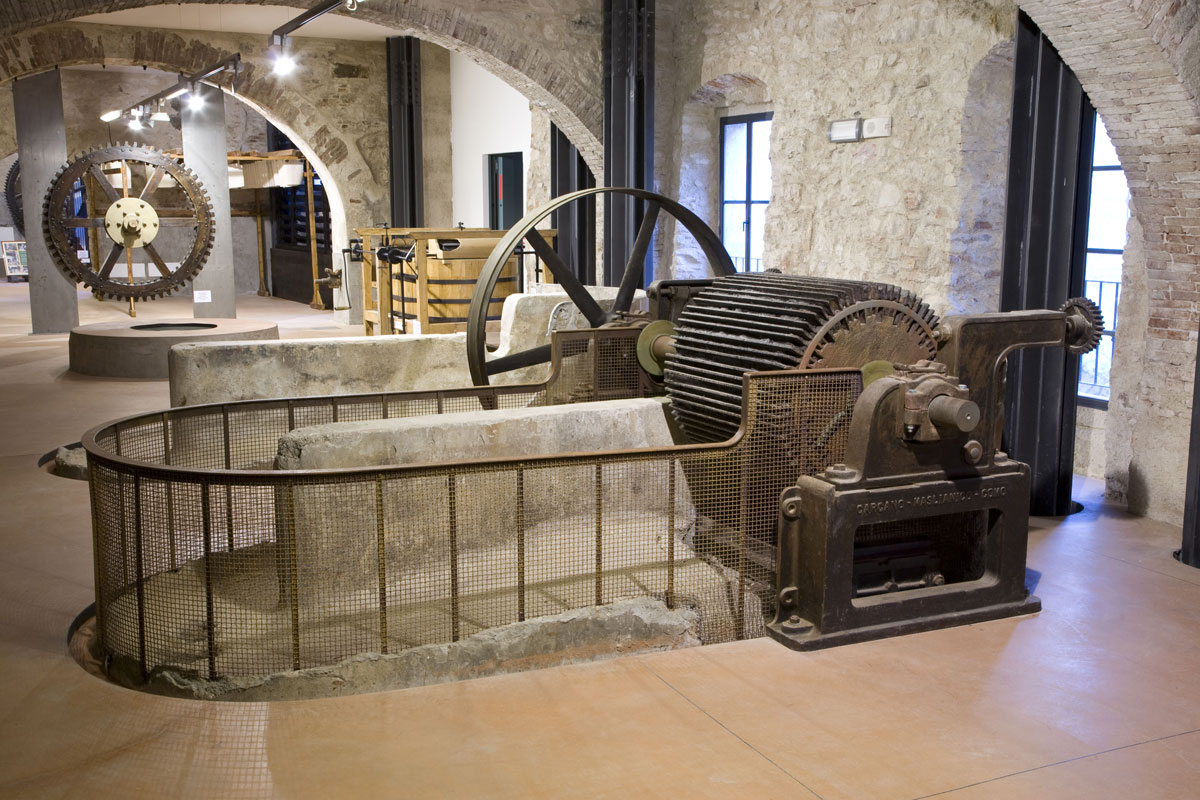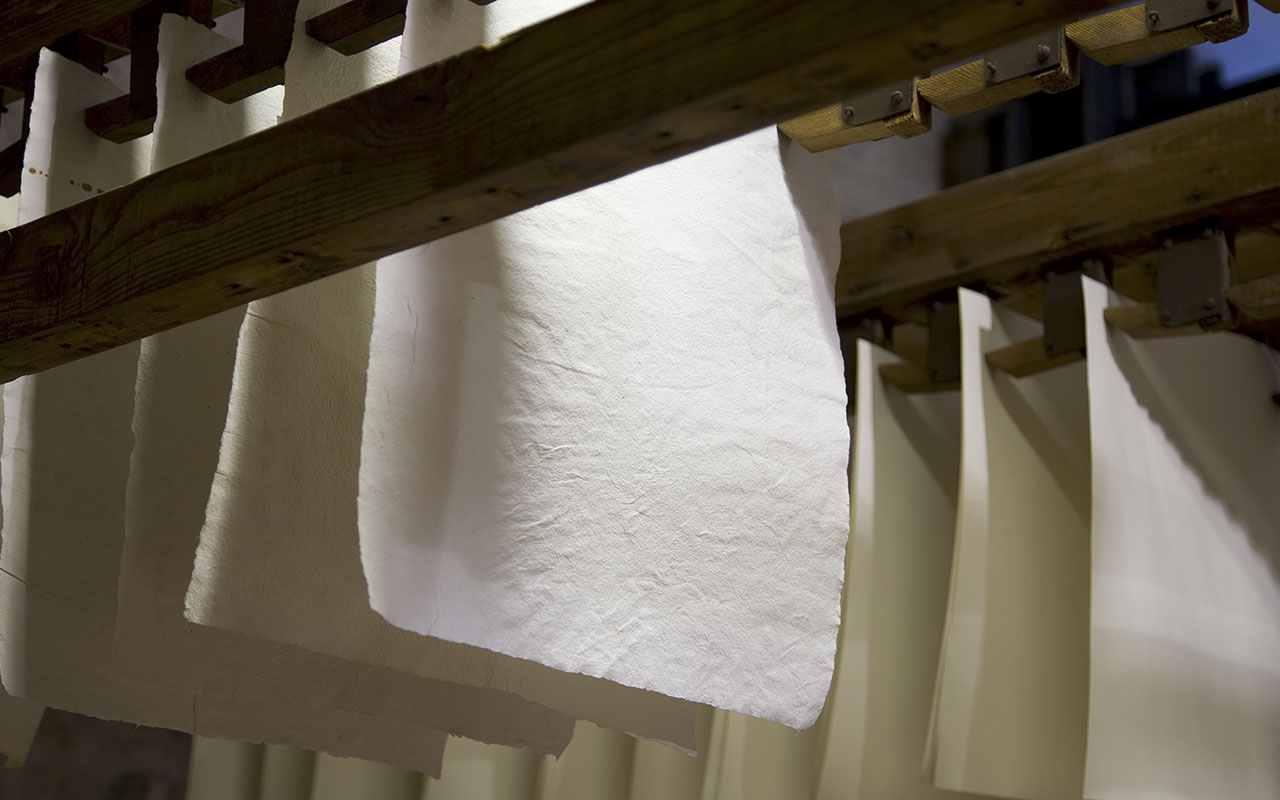The museum structure was build inside the authentic ancient paper mill to let the visitors start a fascinating journey discovering the main stages in the development of papermaking, from its origin up until the 20th century. First the oldest part opens up to visitors, and the discover of every different steps about the centuries-old history art of papermaking. The raw materials utilized to make paper were rags (from linen, cotton or hemp fabrics). They were then sorted out and cut. The shredded rags were immerse in stone vats full of water and quicklime to soak and left to macerate. These stone vats are still to be seen in the museum. After soaking, the rags were placed into special wooden vats where they were beaten by a set of hammers driven by an external water wheel and transformed into a fine white pulp. The rag pulp was then transformed into a sheet of paper by the master paper maker by using a special rectangular mould.
After being pressed to remove di excess water, the sheets were hung to dry one by one in a vast drying area in the upper floors. Finally they were immersed into animal glue in order to prevent them from absorbing too much ink and ready to be flattened in the smoothing room. There is also a special industrial archaeology room where you can admire remains found during the excavation works carried out by archaeologists in the Paper Valley. A brand new interactive table will let you experience the daily life in an old paper mill. A room is dedicated to the story of the typographers Paganini where you can admire rare and precious volumes, printed in Toscolano the first half of 16th Century.



